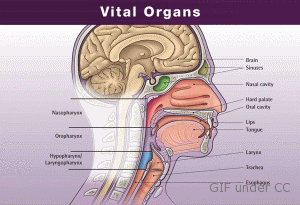Head and Neck Cancer facts

OVERVIEW
The phrase head and neck cancer means a group of cancers found in the region of the head to the neck. The cancers found in said regions are similar biologically and may originate from the upper aerodigestive tract, i.e., the mouth, the lip, the nasal cavity, the paranasal sinuses, the larynx and the pharynx. The cancer may spread to the lymph nodes in the neck area which is commonly the first sign of the disease. The usual cancers of the head and neck area are the oral and laryngeal cancers.
When referring to head and neck cancer, both the respiratory and the digestive tracts are involved. This cancer would interfere with the breathing and eating function. Speech is affected if what is present is laryngeal cancer. Currently, 10% of all cancers are related to the head and neck. The risk of getting this cancer is growing and it increases with age. It commonly occurs in people who are more than 40 years of age and is more likely to affect men more than women. Tumors found in the brains are not classified under the head and neck cancer.
TYPES AND FORMS
- Cancer of the Oral Cavity or the Mouth – this involves the lips, tongue, teeth, the inside lining of both cheeks and lips, gums, under the tongue, mouth’s roof and the area behind the wisdom tooth.
- Cancer of the Oropharynx – this involves the back of the throat as well as the tonsils. It also refers to the tumors found at the back of the 1/3 of the tongue.
- Cancer of the Nasopharynx – this includes the tumors in the area behind the nose.
- Cancer of the Hypopharynx – this are the tumors found at the lower part of the throat.
- Cancer of the Larynx – these are cancers or tumors in the voice box, the Adam’s apple region and the front of the neck. Cancer in the larynx may appear in 3 regions, i.e., the glottis, subglottis and supraglottis. The former are located where the vocal cords are. The second is the area connecting the glottis and the windpipe and the last one is the area above the glottis.
- Cancer of the Trachea – It is usually classified as a head and neck cancer since it is biologically the same in many ways but it is a rare malignancy.
SYMPTOMS
The first and most common symptom of the head and neck cancer, which seemed at first to be quite harmless, is the enlarged lymph nodes in the neck region. Sore throat and a hoarse voice are also common symptoms. For more severe cases, these symptoms persist and even worsen. Swallowing and even speaking can become difficult. Earpains may appear and sometimes, numbness of the muscles of the face.
Other symptoms for all of the different classification of this cancer are mouth sores that does not heal, bleeding gums, mouth, throat, lip and tongue lumps, white and red patches in the mouth, mouth ulcer that refuses to heal, nose bleed, usual blocked nose, sinus infection that cannot be cured by antibiotics, neck pains and masses, bad breath, sore tongue, weight loss and change in diet and slurring of speech.
CAUSES
In the United States, both tobacco and alcohol use are the biggest originators and risk factors of head and neck cancer. Up to 80% of those who have this type of cancers are smokers. A combination of both increases the risk even higher, up to 15 times more as compared to those who use a substance singly.
Other rare cases have bad-fitting dentures and jagged teeth as the culprit to oral cancer. Laryngeal cancer may be caused by exposure to asbestos. Long period of exposure to the sun may cause lip cancer as it may also cause skin cancer. In some countries, link to the chewing of betel nut and cheek lining cancer are seen. Nasal cavity cancer, on the other hand, is found to be frequent among furniture makes due maybe to their breathing in of the wood dust. Some virus may also cause this cancer, e.g., Epstein-Barr virus. Some diseases may lead to head and neck cancer as well like acid reflux disease and larynx reflux disease. There are also observations that ethnicity may also be a cause to this cancer.
TREATMENT
Head and neck cancer, just like many other cancers, may be successfully treated if diagnosed while still at the early stage. Cancer treatments would depend greatly on the location the tumor’s size and the extent of its spread to other parts of the body. The most common treatments to this cancer are surgery, radiation therapy, chemotherapy and targeted therapy. The doctor will decide which treatment is applicable on a case to case basis.
